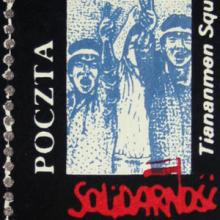Global Contact

Short Teaching Module: Remembering Tiananmen Square
Although China is located quite far from Eastern Europe, dissidents in Eastern Europe identified with the struggles by opposition leaders in China and used images of the 1989 Tiananmen Square uprising to reinforce memories of resistance in Eastern Europe.
Egyptian Misery Shatters French Hopes
Bonaparte’s secretary naively complained how the hopes of the French invasion were shattered by the reality of the situation in Egypt. He clearly expected that the invaded would regard the French as liberators instead of attackers.
Problems in Governing Egypt
Bonaparte’s young secretary was a firsthand, if uncritical, observer who took detailed notes and left his memoirs for posterity. He was clearly enthralled by the young general. Here he describes the difficulty of convincing the Egyptians of French superiority in science.
The Pennsylvania Gazette: U.S. Vigilance (13 December 1797)
The Haitian uprising stoked the fears of whites in the United States that a similar uprising would occur among enslaved populations in their country.
The Pennsylvania Gazette: Unrest Continues (28 September 1796)
This newspaper details how despite the abolition of slavery in Haiti, turbulence continued in many parts of the colony. The French relied on local generals, including Toussaint L’Ouverture, to try to restore order.
The Pennsylvania Gazette: Free blacks and mulattos flee (4 December 1793)
Along with whites, free blacks and mulattos were also among those who fled the Haitian uprising. Mulattos could own slaves and plantations, and many of them did. Free blacks often manned the militias used to hunt down runaway slaves.
The Pennsylvania Gazette: White Refugees (17 July 1793)
This newspaper article reports sympathetically on the situation of the white refugees fleeing Haiti because of uprising. The articles details how the cities of Baltimore and Philadelphia met the influx of these refugees.
The Pennsylvania Gazette: Blame Now Falls (16 May 1792)
The blame for the Haitian Revolution now falls, at least according to the author of this letter, on the "blood–thirsty aristocracy," which has created dissensions among the French. The author also expresses alarm at the thought of the revolt spreading to other islands in the Caribbean.
The Pennsylvania Gazette: Magnitude of the Insurrection (12 October 1791)
The magnitude of the Haitian insurrection quickly became clear as alarmed observers related that considerable armies were being raised to fight the rebels. It is noteworthy that such reports even to northern U.S. newspapers expressed little sympathy for the rebels.
The Revolt from An Historical Account of the Black Empire of Hayti
Rainsford’s detailed contemporary account of the revolt emphasizes the strenuous yet ultimately unsuccessful mobilization of colonial French resources.